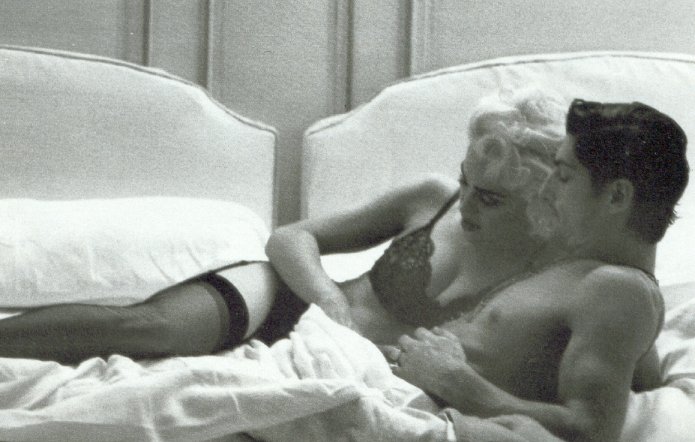
From Runways to Redlight Districts
Europe is a wonderful place to be a fashion designer, photographer or model. Or so the fashion industry tells us. There are always plenty of opportunities for a pretty girl to make some money showing off some clothes and some skin.But not according to former fashion editor Louise Gagnon and several models who have since quit the industry and have described as the seedy underbelly of the fashion industry. An industry filled with illicit drugs, prostitution, forced anorexia and mental/physical abuse.







Her abusive husband Mickey Rourke didn't help either. Rourke was jealous of Carré Otis's relationships with several fashion photographers (several of which raped her) and beat her on multiple occasions.
In 1991 Carré Otis got a gunshot wound to her shoulder during a visit with Rourke in Santa Fe, New Mexico. She later claimed that the .357 Magnum went off when she dropped her purse on a table.

Following her divorce her career as a fashion supermodel continued to take off, but her private life was one of constant drug addiction and repeated rapes from people she was employed with.
The fashion industry likes to keep a lid on these events however and no "reputable fashion magazine" would dare talk out against all the problems going on in the industry. Its not so much that the fashion industry is a prostitution ring in disguise, but that it is a group of people that collectively has decided to exploit the models sexually and mentally using a combination of peer pressure, money, drugs and mental mind games.

To leave the industry a model would have to simultaneously cut off all contact with the people who are a bad influence. This can be done as Carré Otis has already demonstrated.
This process can be made easier by trying to change your focus in the industry. Carré Otis put on 30 lbs and became a model for larger sizes while Louise Gagnon switched to fashion magazines and switched again to the wedding industry. Obviously its difficult to leave the industry entirely, but there are other aspects of the industry that aren't so corrupted by wealth and power.


"I became politically active in 1978, when police murdered my friend for being a prostitute. That year, there was a police crackdown and we were banned from leaving our building, but my friend went out anyway. They arrested her, took her to the police station and beat her to death." - Gabriela Leite.
Leite organized a protest agains the police and the officer who beat her friend to death was eventually dismissed from the force. Since then she has kept on marching and trying to help prostitutes secure more rights, more safety and to help them get out of the business.

Lest we forget we now live in an era where celebrity sex idols (ie. Paris Hilton and Pamela Anderson) routinely make homemade sex videos that accidentally get leaked to the public and despite this turns them into even bigger celebrities.




Parents of the children have to be extra wary about sending their children to work for photographers, who despite their possibly great reputations are always one or two steps away from being a child rapist. Chaperones are a definite must and if the parents are disturbed by what they are seeing too much of it is certainly time to pull the plug. Mind you the damage to the child's psyche might already be done.

In Thailand there are more underage prostitutes than there is anywhere else in the world. In stark contrast Thailand's child modelling industry is basically non-existent.

So is the fashion industry just a big prostitution ring in disguise? No. Absolutely not.
But there is certainly a lot of prostitution going on behind closed doors, and it is basically legalized prostitution for the wealthy.In many countries prostitution is illegal, but it is not strictly inforced. The prostitutes get away with it and charges are rarely laid. Conviction rates for "Johns" are pathetically low because it is often difficult to determine whether any crime has been convicted.


Police in France and Britain have cracked down on prostitution within the modelling industry, but it still continues to flourish. People like money and sex, so the world's oldest profession is very hard to stop.

Some people will tell you that there is no prostitution in the fashion industry, that they've been in the fashion industry for years and they've never encountered prostitution or rape in their business. Some will also tell you that if two consenting adults, a model and a photographer, decide to have sex after the shoot is over it is really none of your business and that isn't prostitution because they both agreed to it. Or even the analogy that actresses sleep with movie directors/producers regularly (and sometimes they marry them) and that doesn't make them prostitutes.

And you can't expect the model to be not be thinking "Hey, if a screw this guy will he pay me more or hire me again?" or "If I do this will it help my career?"
It is a slippery slope downhill.
